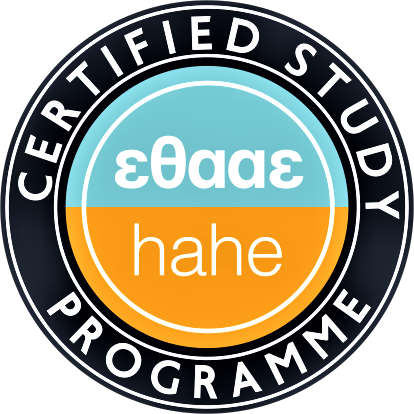Statistics
Number of credits allocated: 6 ECTS Credits
Objective of the course (expected learning outcomes and competences to be acquired)
The goal of the course is to introduce the student to the basic statistics and equip students with essential statistical knowledge required for the econometric courses. Through the course, students learn: (1) how to extract information from collected statistical data via the application of methods of descriptive statistics, and (2) how to draw conclusions about the characteristics of a population of measurements from a sample of measurements at hand and at a certain level of precision via the application of inferential statistical methods. The students are introduced and trained to the material with the use of analytical and computational methods.
Prerequisites: None
Recommended material: Calculus (Derivatives, Integrals), Use of computers
Course contents
The topics included within the scope of an introductory course in Statistics for students in economics are quite standard. The following list provides the areas that will be covered within the course:
- Descriptive statistics.
- Elements of probability theory.
- Population, random variables and probability distributions (continuous, discrete). Characteristics of distributions (expected value, variance, moments).
- Joint probability distributions, marginal and conditional probability distributions. Covariance, correlation, independence. Linear combination of random variables.
- Probability models for discrete random variables.
- Normal probability distribution and related distributions.
- Random sampling and sampling distributions. Central limit theorem.
- Parameter estimation. Properties of estimators.
- Confidence intervals of population mean and of difference of means of two populations.
- Confidence intervals of population percentage and of difference of percentages of two populations.
- Hypotheses testing on population mean and on difference of means of two populations.
- Hypotheses testing on population percentage and on difference of percentages of two populations.
- Index numbers.
Recommended reading
- Statistics with applications in Economics, 2nd Volume, Tsionas (2009).
- Wonnacott, T.H. and R.J. Wonnacott (1990). Introductory Statistics, 5th Edition, John Wiley & Sons, ΝΥ.
- Newbold, P., Carlson, W. and B. Thorne (2013). Statistics for Business and Economics, 8th Edition, Prentice Hall.
- McClave, J.T., Benson, P.G. and T. Sincich (2011). Statistics for Business and Economics, 11th Edition, Pearson.
- Statistics, Volume Α, 2010, V. Aggelis and A. Dimaki, Sofia Pubications
Teaching methods In-class lectures, weekly tutorials, computer lab, in person communication during office hours.
Assessment methods: Final written exam
Language of instruction: Greek with frequent use of English terminology





 Patision 76
Patision 76 2108203 106 / 2108203 107
2108203 106 / 2108203 107 
